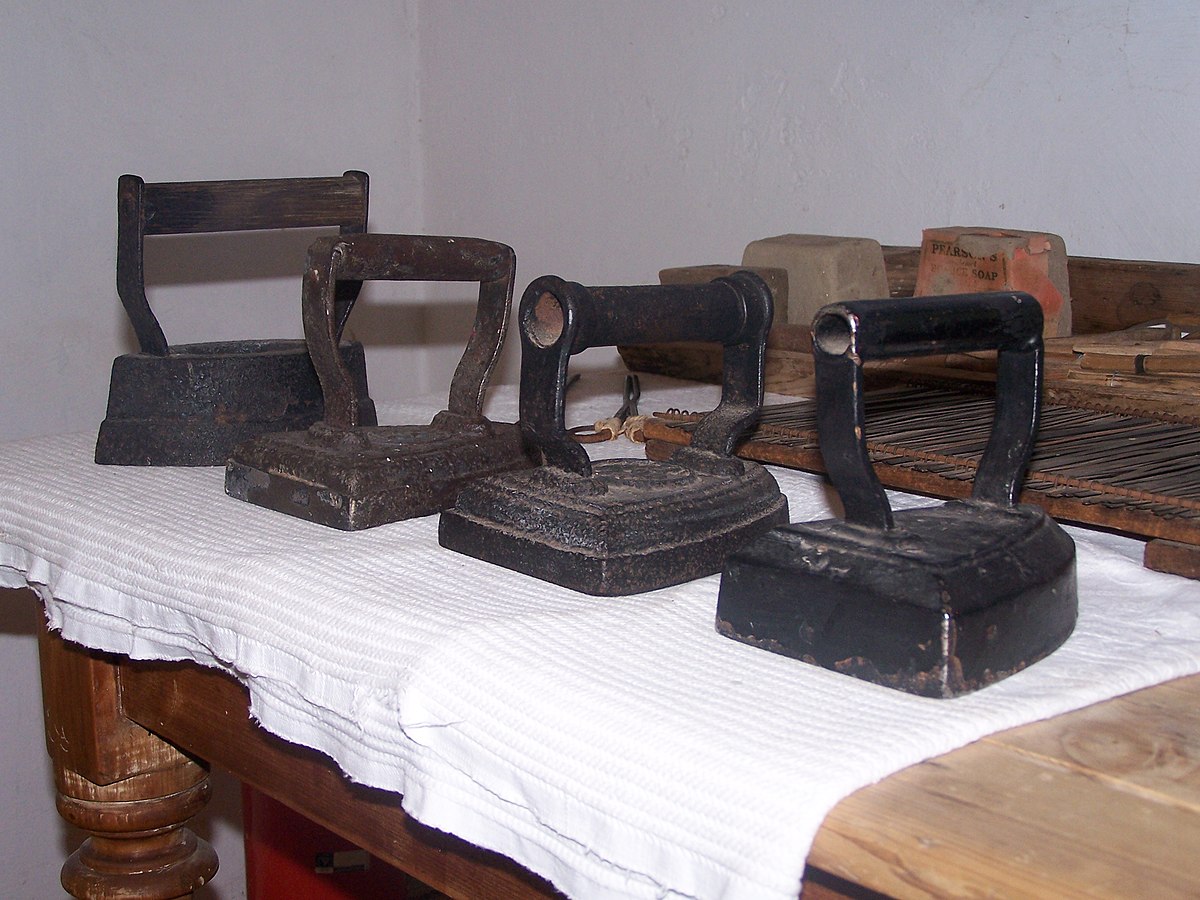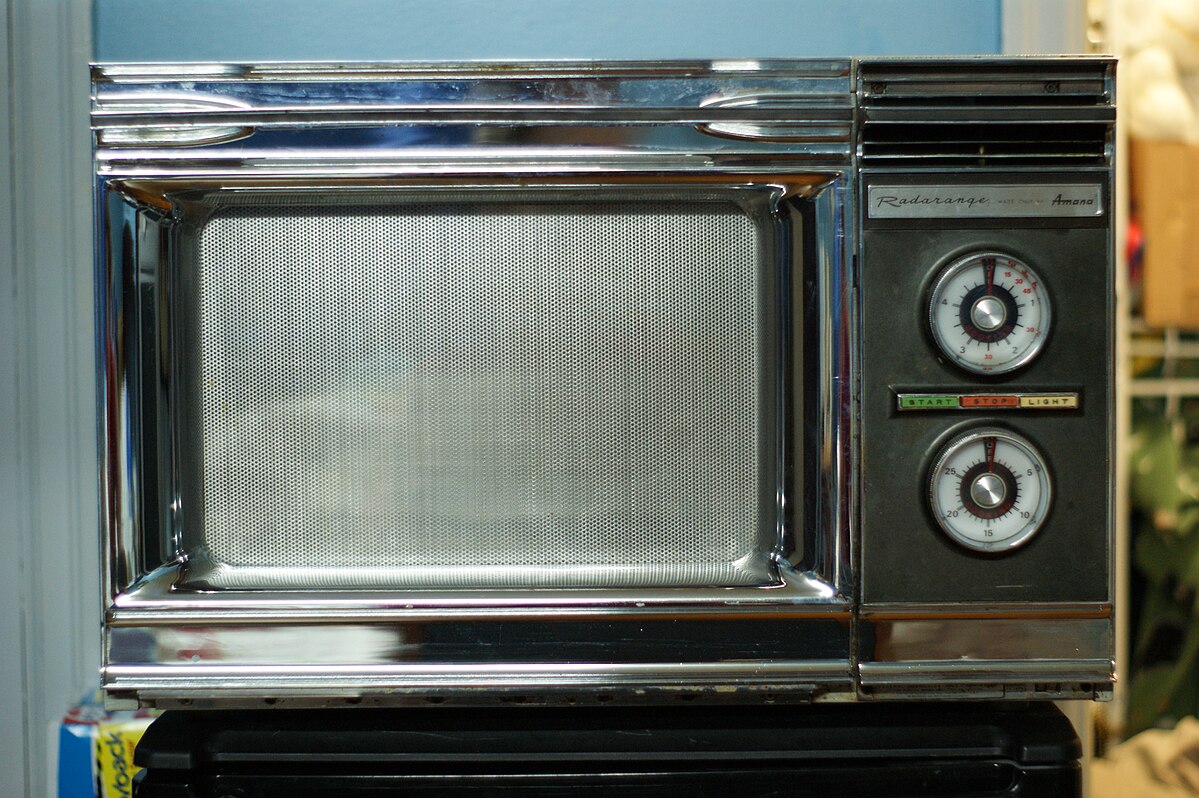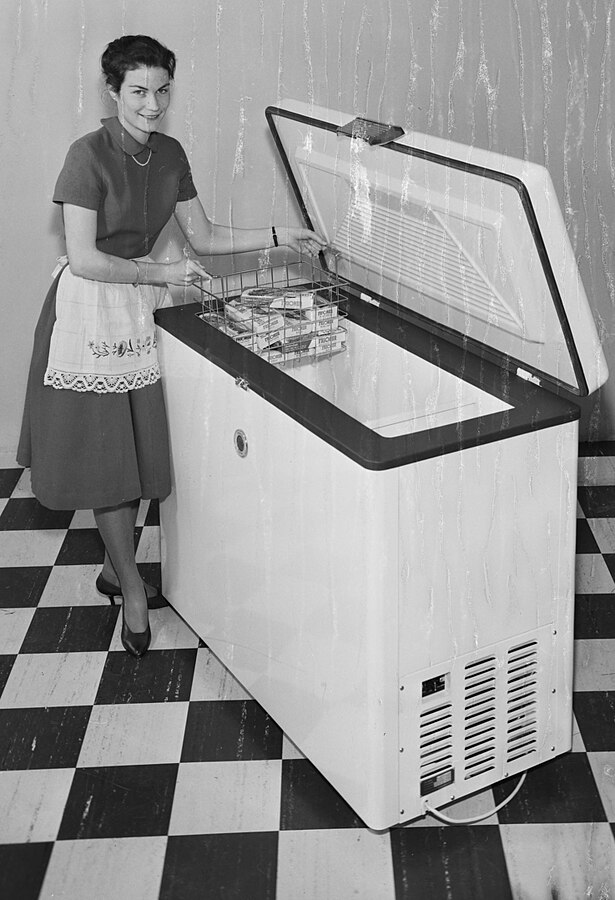Over the years, household appliances have transformed the way we live, making daily tasks faster, easier, and more efficient. From washing clothes to preserving food, these innovations have reshaped the routines of millions of people around the world. Many early home appliances, like the electric washing machine and the refrigerator, were groundbreaking for their time, eliminating the need for manual labor and creating more time for other activities. In this article, we’ll take a look at 14 early appliances that had a significant impact on daily life, exploring how they changed the way we live, work, and interact with our homes.
Electric Washing Machine (1900s)

The electric washing machine revolutionized the way people did laundry. Before its invention, washing clothes was a labor-intensive task, often done by hand with scrubbing boards. Early models, such as the Thor washing machine, used an agitator to scrub clothes clean while water was manually added. These machines dramatically reduced the physical effort involved, though they were initially bulky and expensive. Over time, more compact and efficient models were developed, with improvements in motors and washing cycles. The advent of electric washing machines meant less time spent on household chores, giving women, in particular, more freedom to engage in other activities. By the mid-20th century, washing machines became a staple in homes worldwide, forever changing the daily routine of laundry.
Refrigerator (1920s)

Before refrigerators, people relied on iceboxes to preserve food, but these required frequent refilling with ice. The introduction of the electric refrigerator in the 1920s changed food storage forever. The first household refrigerators used compressors to cool and preserve perishable items, making them more convenient and efficient than iceboxes. With the ability to store food for longer periods without spoilage, families could buy in bulk and plan meals more easily. By the 1930s, refrigerators became more affordable, bringing them into the homes of middle-class families. The refrigerator not only made food storage simpler but also improved health by reducing foodborne illnesses. Today, refrigerators are equipped with advanced features like ice makers, water dispensers, and smart technology, further enhancing their convenience.
Vacuum Cleaner (1901)

The invention of the vacuum cleaner, credited to British inventor Hubert Cecil Booth in 1901, changed the way people cleaned their homes. Early models were large, cumbersome machines that had to be operated by hand or were mounted on carriages pulled by horses. However, by the 1920s, smaller, more portable models began to appear, making home cleaning much easier. These new devices used suction to remove dirt from carpets, rugs, and upholstery, a far more efficient method than sweeping or beating carpets. Over the years, vacuum cleaners became lighter, quieter, and more powerful, making them essential in households around the world. By the 1950s, vacuum cleaners became a common household item, freeing people from the laborious task of sweeping. Today’s vacuums come with features like cordless operation, advanced filtration systems, and robotic cleaning technology.
Electric Iron (1882)

The electric iron, first patented by George Schneider in 1882, made ironing clothes much faster and more efficient. Before its invention, people used heavy, metal irons heated on a stove, which could be dangerous and time-consuming. The electric iron featured a heated plate powered by electricity, which eliminated the need to wait for it to heat up on a stove. This innovation made the task of smoothing out wrinkles quicker and more consistent, and it soon became an essential part of every home. Over the years, the electric iron evolved, becoming lighter and offering adjustable heat settings for different fabrics. In the 1950s, steam irons were introduced, further improving the effectiveness of the appliance by adding moisture to the process. Today, irons come with advanced steam technology, automatic shut-off functions, and self-cleaning features.
Toaster (1893)

The invention of the toaster in 1893 by Charles Strite made breakfast preparation much easier and quicker. Strite’s design featured a simple mechanism that allowed bread to be toasted evenly on both sides with the press of a button. Before this, people had to toast bread over an open flame or in a broiler, a process that required constant attention. Early toasters were somewhat primitive, with exposed heating elements, but by the 1920s, they became more refined, offering even toasting and automatic pop-up features. The toaster allowed for a consistent and convenient way to prepare toasted bread for a wide variety of meals. As the years passed, toaster designs became more compact and energy-efficient, and they started incorporating multiple slots and adjustable browning settings. Modern toasters even feature additional functions like defrosting and bagel toasting.
Dishwasher (1886)

The invention of the dishwasher in 1886 by Josephine Cochrane transformed kitchen duties, especially for large families and commercial establishments. Prior to the dishwasher, washing dishes was an exhausting chore that required considerable time and effort. Cochrane’s design, though rudimentary by today’s standards, used a motor to spray hot soapy water onto dishes, making the process far more efficient. Over time, dishwashers became smaller, more energy-efficient, and more effective at cleaning dishes with less water and detergent. By the 1950s, dishwashers began to find their way into middle-class homes, offering a convenient solution to a dreaded household task. Innovations such as multiple wash cycles, adjustable racks, and noise reduction technology further improved dishwashing. Today’s dishwashers feature eco-friendly modes, advanced drying technology, and smart connectivity.
Air Conditioner (1902)

The invention of the air conditioner by Willis Haviland Carrier in 1902 marked a turning point in controlling indoor climates. Originally created to control the humidity in a printing plant, it quickly gained popularity in commercial buildings, and soon, residential homes followed suit. Early air conditioners were bulky and expensive, with large units often installed in windows. However, by the 1950s, the affordability and accessibility of air conditioning units made them commonplace in suburban homes. Air conditioning not only improved comfort during hot weather but also contributed to public health by controlling heat-related illnesses. As technology advanced, air conditioners became smaller, quieter, and more energy-efficient. Today, with features like smart thermostats and zoned cooling, air conditioners offer personalized climate control at the touch of a button.
Microwave Oven (1945)

The microwave oven, invented by Percy Spencer in 1945, changed the way people cooked food. Spencer discovered microwave cooking while working with radar equipment and noticing that a candy bar melted in his pocket. This led to the development of the first microwave oven, which used electromagnetic waves to heat food quickly and efficiently. Early microwave ovens were large and expensive, but as technology improved, the appliances became more affordable and compact for home use. By the 1970s, microwaves had become a standard feature in many kitchens, greatly reducing cooking times. They allowed people to reheat leftovers, cook frozen meals, and even prepare certain dishes from scratch in minutes. Today, microwaves come with multiple functions, such as convection baking and grilling, enhancing their versatility in modern kitchens.
Electric Fan (1880s)

The electric fan, invented in the 1880s, brought a new level of comfort to homes during hot weather. Prior to electric fans, people relied on manual fans or open windows to cool off. The electric fan, powered by electricity, used rotating blades to circulate air, providing a consistent breeze that could cool rooms efficiently. Early models were large, often mounted on stands or ceilings, but later versions became more portable and compact. By the early 1900s, fans became a popular addition to homes, especially in warmer climates. Their introduction coincided with the growing availability of electricity in suburban neighborhoods. Modern fans come in a variety of designs, including bladeless fans and tower fans, offering quiet and energy-efficient cooling.
Sewing Machine (1851)

Elias Howe’s invention of the sewing machine in 1851 made garment production faster and more efficient than ever before. Before its invention, sewing was a slow, labor-intensive process done by hand, which was both time-consuming and tedious. The sewing machine automated this process, allowing for quicker stitching and more precise results. Early models were complex, requiring skilled operators, but over time, they became more user-friendly. By the late 19th century, sewing machines became common in households, enabling people to make their own clothes with ease. This invention played a significant role in the industrial revolution, leading to mass production of clothing and textiles. Today, sewing machines are used for everything from quilting to embroidery, offering a variety of automatic features.
Coffee Maker (1908)

The invention of the drip coffee maker in 1908 by Melitta Bentz created an easier way to brew coffee without the need for a stove. Prior to this, coffee was made by boiling it in a pot or using a manual filter system. The first drip coffee maker used paper filters and heated water to drip over the coffee grounds, resulting in a cleaner and more consistent cup of coffee. Over the years, coffee makers became more sophisticated, with electric heating elements and timers to automate the brewing process. In the 1950s, the introduction of the percolator and the automatic drip coffee maker made it even easier to prepare coffee. By the 1970s, coffee makers had become an essential part of the kitchen, with models that allowed for faster brewing and temperature control. Today, modern coffee makers feature programmable settings, built-in grinders, and even Wi-Fi connectivity, making them integral to daily routines for coffee lovers.
Clothes Dryer (1930s)

The clothes dryer, which became widely available in the 1930s, complemented the electric washing machine, transforming the laundry process. Before dryers, clothes were air-dried on clotheslines, which was not only time-consuming but also dependent on the weather. The first clothes dryers were simple mechanical devices that used gas or electricity to circulate hot air, helping to dry clothes faster than hanging them outdoors. Early models were often bulky and expensive, but their convenience made them highly desirable. By the 1950s, the clothes dryer became more affordable and compact, allowing for wider adoption. This appliance allowed families to do laundry year-round, regardless of weather conditions, and freed up time previously spent on outdoor drying. Today’s dryers come with advanced features such as moisture sensors, energy efficiency, and steam cycles to reduce wrinkles and refresh clothes.
Deep Freezer (1940s)

Before deep freezers, families relied on iceboxes or refrigeration to store food, but these options had limited capacity. The deep freezer, introduced in the 1940s, provided a new solution for long-term food storage. Powered by electricity, deep freezers allowed people to store large quantities of food, preserving meats, vegetables, and prepared meals for months at a time. This innovation was especially beneficial during times of food shortages, as it allowed families to stock up on food in advance. Over time, the design of deep freezers became more efficient, with better insulation and temperature controls. By the 1950s, deep freezers were common in suburban homes, giving families greater control over their food storage and meal planning. Today, deep freezers are available in a variety of sizes and are essential for bulk food storage and freezing large quantities of food.
Electric Can Opener (1930s)

The electric can opener, first introduced in the 1930s, quickly became a game-changer in kitchens. Prior to its invention, opening cans was a laborious task that required the use of manual handheld can openers, which could be difficult to operate and dangerous. Early electric models were bulky and primarily designed for commercial use, but by the 1950s, smaller, more affordable versions became available for home kitchens. These electric devices eliminated the need for physical effort, allowing users to open cans with the push of a button. With the rise of convenience foods in the mid-20th century, the electric can opener became indispensable for many households. Innovations such as automatic shut-off mechanisms, easy-to-clean parts, and safety features were later added, making these tools even more user-friendly. Today, electric can openers come in various styles, some featuring hands-free operation, ergonomic handles, and even built-in knife sharpeners, solidifying their place as an essential kitchen appliance.
This article originally appeared on Rarest.org.
More From Rarest.Org
Abandoned aquatic parks are fascinating relics of summers long past, once brimming with life and laughter but now left to decay in eerie silence. These water-themed attractions, often filled with thrilling slides, wave pools, and family fun, were once bustling hotspots that defined childhoods and summer vacations. Read more.
When it comes to extravagant living, the United States is home to some of the largest and most awe-inspiring residences in the world. These sprawling estates, many of which boast tens of thousands of square feet, are not just homes but monuments to architectural brilliance, luxury, and ambition. Read more.
Meteorite craters are some of the most incredible remnants of cosmic events from millions of years ago. These giant impacts left marks on our planet that still captivate scientists and travelers alike. Read more.



